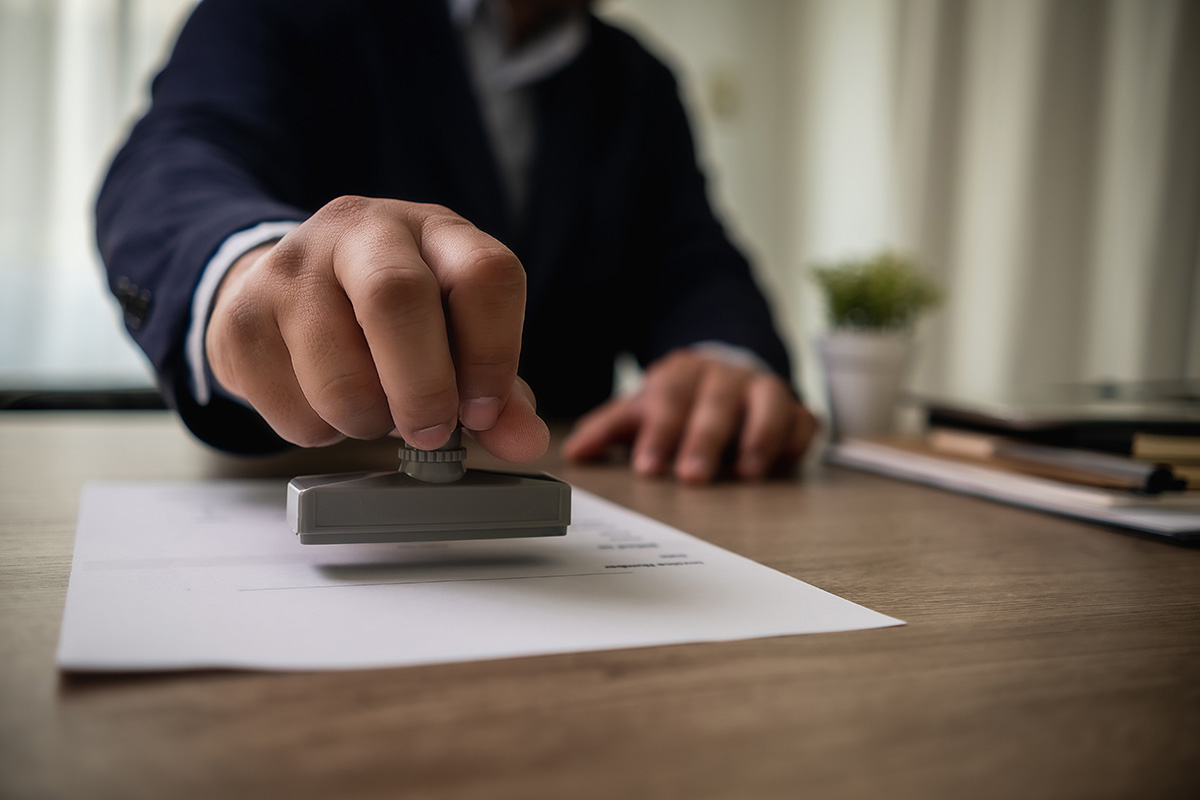
Can a Notary Correct a Mistake on the Notarial Certificate?
What Notaries Can — and Can’t — Do to Fix Errors
Table Of Content
- What Is a Notarial Certificate?
- Common Mistakes Found in Notarial Certificates
- ✏️ Common Notarial Mistakes
- So, Can a Notary Correct a Mistake?
- ✅ Yes — But Only Under Certain Conditions
- Types of Corrections: What’s Allowed and What’s Not
- How to Correct a Notarial Mistake Properly
- 🛠 How to Correct a Mistake
- Can a Notary Make Corrections Without the Signer Present?
- When Should the Notarization Be Redone?
- Final Tips for Avoiding Notarial Errors
- Conclusion
Mistakes can happen, even in legal documentation. A misspelled name, incorrect date, or missing signature on a notarial certificate can cause delays, rejections, or even legal challenges. So what happens when a notary realizes an error has been made on the certificate? Can the notary simply fix it, or are there rules that must be followed?
In this post, we’ll break down the common types of notarial mistakes, explain when and how they can be corrected, and provide a helpful reference table for quick guidance. Whether you’re a notary public, a signer, or someone relying on notarized documents, this guide will help you understand the proper way to address errors in notarial certificates.
What Is a Notarial Certificate?

A notarial certificate is the section of a notarized document where the notary affirms details such as:
- The date of notarization
- The names of the signers
- The type of notarial act performed (acknowledgment, jurat, etc.)
- The location (state and county)
- The notary’s official signature and seal
This section is legally binding and subject to strict state laws. Errors in the notarial certificate can invalidate the entire document.
Common Mistakes Found in Notarial Certificates
Here are the most common errors notaries might make:
✏️ Common Notarial Mistakes:
- Incorrect Date of Notarization – e.g., writing the wrong day, month, or year.
- Misspelled Signer’s Name – especially if it doesn’t match the ID.
- Wrong County or State (Venue Error) – incorrect location of notarization.
- Missing Notary Signature or Seal – an incomplete certificate.
- Incorrect Notarial Language – using the wrong wording for the type of act.
- Signed in Advance – the signer signed the document before appearing.
Some of these mistakes are minor and fixable, while others may require redoing the entire notarization.
So, Can a Notary Correct a Mistake?
✅ Yes — But Only Under Certain Conditions
In many states, a notary is allowed to correct a mistake, but only if:
- The correction is made before the notary journal entry is complete.
- The signer is present at the time of correction.
- No fraudulent intent is involved.
- The correction is properly initialed and dated.
If the document has already been delivered, filed, or recorded, the notary may not alter the certificate without following specific procedures.
Types of Corrections: What’s Allowed and What’s Not
Here’s a table summarizing different types of errors and whether or not they can be corrected:
| Type of Error | Can the Notary Correct It? | What’s Required? |
|---|---|---|
| Wrong date of notarization | ✅ Yes | Notary must line through, correct, and initial |
| Misspelled name | ✅ Yes (with signer present) | Confirm ID, correct in presence of signer |
| Incorrect venue (State/County) | ✅ Yes | Line through error, write correct venue, initial |
| Missing seal or signature | ✅ Yes | Must add before delivering the document |
| Wrong notarial wording | ❌ No (in most cases) | Requires a new certificate or redo notarization |
| Fraudulent info or forged sig | ❌ No | Notary should refuse to notarize, report if needed |
| Signer already left | ❌ No (unless returning) | Notary must redo in presence of signer |
How to Correct a Notarial Mistake Properly

If you’re a notary and catch an error before the document leaves your possession, follow these best practices:
🛠 How to Correct a Mistake:
- Do not use white-out or erase the mistake. Always draw a single line through the incorrect information.
- Write the correct information clearly above or beside the error.
- Initial and date the correction near the change.
- Record the correction in your notary journal with an explanation.
- If the mistake is extensive or causes confusion, consider attaching a new notarial certificate instead.
If the document is already with the client, you may need to:
- Ask them to return for a new notarization.
- Prepare a fresh certificate page.
- In some cases, redo the entire notarial act.
Can a Notary Make Corrections Without the Signer Present?
In general, no. Most states require that any correction involving signer details (such as name or date of signing) must be made in the signer’s presence. Making changes after the fact without the signer can open the door to accusations of fraud or misconduct.
For errors that don’t involve the signer — like adding a missing seal — it may be permissible in some states. Always check your state’s notary laws to be sure.
When Should the Notarization Be Redone?

Sometimes, the best and safest route is to redo the notarization. This is especially true if:
- The signer has already left and can’t return.
- The notary is unsure whether a correction is allowed.
- The error affects the validity of the entire document.
- The notarial wording is incorrect or missing.
Rather than risk a rejected or challenged document, redoing the notarization from scratch ensures compliance and protects all parties involved.
Final Tips for Avoiding Notarial Errors
To minimize mistakes:
- Double-check all details before completing the certificate.
- Keep your journal updated and accurate.
- Review state guidelines regularly to stay compliant.
- Use notarial certificates that include state-specific wording.
- When in doubt, don’t guess — consult your state’s notary handbook or commission office.
Conclusion
A notary public plays an essential role in safeguarding the integrity of signed documents. While some mistakes on a notarial certificate can be corrected, it’s important to follow proper procedures and know your state’s laws. Corrections must be made carefully, transparently, and often in the presence of the signer. When in doubt, redoing the notarization is often the safest legal path.
By understanding what you can and can’t fix — and how to fix it properly — you’ll protect yourself, the signer, and the integrity of the document.


